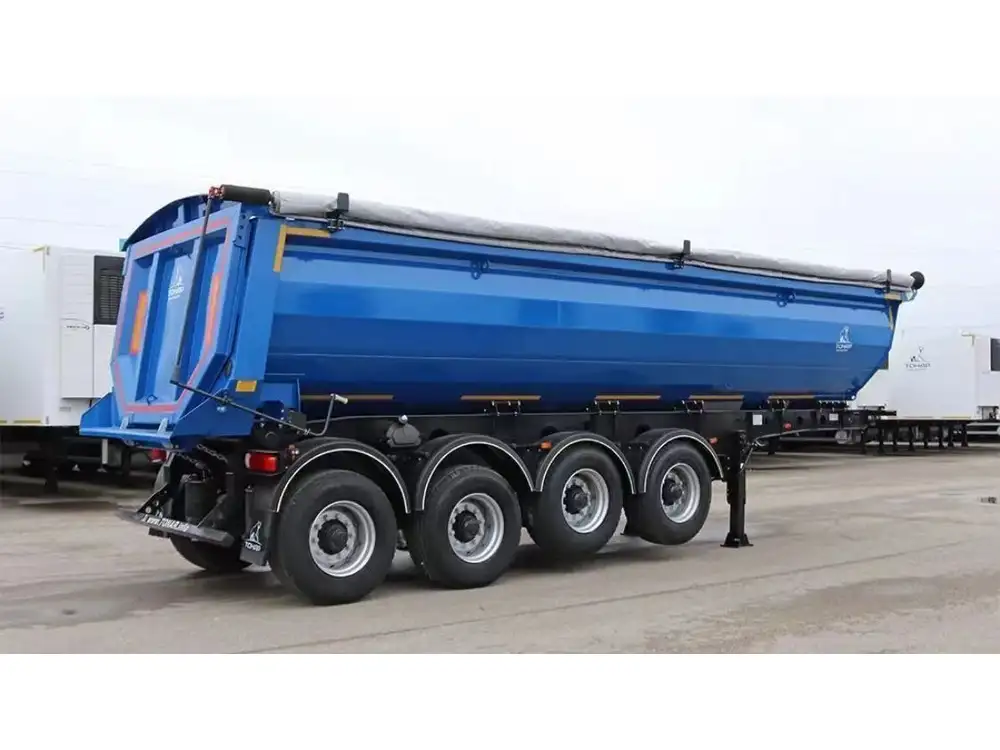When engaging in the sale of semi trailers, manufacturers and sellers alike are confronted with a unique set of challenges and opportunities. Understanding how to effectively position, market, and sell semi trailers can enhance trade profits significantly. This guide is tailored to equip you with advanced strategies and insights on how to successfully sell semi trailers.
Understanding the Market for Semi Trailers
Before delving into the intricacies of selling, it’s essential to grasp the current landscape of the semi trailer market. The demand for semi trailers often fluctuates due to various economic factors, including:
- Economic Growth: As economies grow, the demand for transportation increases, leading to higher sales of semi trailers.
- Technological Advancements: Innovations in trailer design and materials affect buyer choices.
- Regulatory Changes: Compliance requirements can impact trailer design and sales.
Key Considerations
For potential sellers, it’s pivotal to analyze the following components of the market:
| Factor | Impact on Sales |
|---|---|
| Economic Trends | Direct correlation to transportation needs |
| Industry Regulations | Necessitate specific design features |
| Competition | Influences pricing and features offered |
| Technological Trends | Adaptation to new materials or design features necessary |

Identifying Target Customers
Selling semi trailers is not a one-size-fits-all model. It is imperative to identify your target market meticulously. The potential buyers may include:
- Freight Companies: Businesses needing reliable transport solutions for their goods.
- Construction Firms: Establishments requiring heavy equipment transport.
- Distributors/Retailers: Companies that transport goods over long distances.
- Independent Truck Drivers: Solopreneurs who often require customized solutions.
Each segment possesses its unique needs and preferences, necessitating a tailored sales strategy.
Building Buyer Personas
Creating detailed profiles for your target customers can streamline your marketing efforts. Consider attributes such as:
- Demographics: Age, location, and company size.
- Buying Behavior: Frequency of purchase, preferred financing methods.
- Pain Points: Challenges they face in logistics and transportation.
Crafting a Compelling Sales Strategy

1. Product Differentiation
In a saturated market, differentiation is crucial. Identify what sets your semi trailers apart. It could be:
- Advanced Safety Features: Enhanced braking systems or reflective materials.
- Customization Options: Flexibility in design tailored to specific needs.
- Technological Integration: GPS tracking, fuel efficiency technologies.
2. Pricing Strategy
Setting an appropriate price requires a meticulous balance between value provided and market acceptance. Consider these pricing tactics:
- Cost-Plus Pricing: Calculate total production costs and add a margin.
- Value-Based Pricing: Pricing based on perceived value to the customer.
- Competitive Pricing: Analyzing competitor prices to ensure competitiveness in the market.
3. Marketing Channels
Choosing the right marketing channels can significantly affect visibility and reach. Consider employing:
| Channel | Benefits |
|---|---|
| Social Media | Great for branding and engaging potential buyers |
| Trade Shows | Direct exposure to a large audience |
| Online Marketplaces | Wider audience reach, easy to manage |
| Email Campaigns | Targeted outreach and relationship building |

Leveraging Online Sales Platforms
In today’s digitized marketplace, enhancing your online presence is paramount. Employ tactics to capitalize on this medium:
Search Engine Optimization (SEO)
Optimizing your website ensures that it ranks well on search engines. Include:
- Keyword-Rich Content: Incorporate keywords like “how to sell semi trailers” throughout your site.
- Blogging: Share insights, tips, and industry trends to attract visitors.
- Video Content: Utilize videos demonstrating the features of your semi trailers.
Online Advertising
Employ targeted online advertising strategies, such as:
- Google Ads: Utilize keyword targeting to reach specific audiences.
- Social Media Ads: Collect leads through visual content that highlights your trailers.

Customer Relationship Management (CRM)
Utilizing a CRM can aid in tracking customer interactions and managing leads efficiently. Features to look for include:
- Lead Tracking: Monitor potential customers and their behaviors.
- Email Integration: Streamline communications with prospects.
- Analytics Tools: Measure the effectiveness of your outreach efforts.
Networking and Partnerships
Building valuable partnerships within the industry can expand your reach and credibility. Consider:
- Collaborating with Logistic Companies: Offering exclusive deals or partnerships can create a mutually beneficial arrangement.
- Bonding with Industry Associations: Join relevant associations to find potential clients and partners.
Conducting Effective Sales Presentations
What renders a sales presentation impactful? Here are essential elements to consider:

Prepare Thoroughly
- Know Your Product: Be well-versed in every feature and benefit of your semi trailers.
- Understand Your Audience: Tailor your presentation to address the specific needs and interests of potential buyers.
Utilize Visual Aids
- High-Quality Images/Videos: Showcase your semi trailers using engaging multimedia.
- Data and Statistics: Present relevant data that supports your sales claims.
Address Objections
Prepare responses to common customer objections about pricing, features, or delivery times. This shows you’re knowledgeable and genuinely willing to address concerns.

After Sales Services
Assembling a robust after-sales strategy fosters customer loyalty:
- Maintenance Offerings: Suggest maintenance packages and inspections.
- Warranties: Clearly outline warranty offerings, covering parts and labor.
- Customer Support: Establish a solid support system for query resolution post-purchase.
Conclusion
Mastering the sale of semi trailers requires a confluence of strategic planning, market understanding, and proactive engagement with prospective buyers. As manufacturers, the greater your understanding of market dynamics and customer preferences, the more effectively you can position your semi trailers.
Embrace technological advances, tap into diverse marketing channels, and cultivate long-lasting relationships within the industry. By prioritizing these aspects, we can ensure our approach not only meets but surpasses customer expectations, driving success in the semi trailer market.
Additional Resources
- Industry Reports: Access market analysis reports for in-depth trends.
- Webinars: Join sessions on sales strategies specific to transportation and logistics.
- Networking Events: Attend trade shows and expos to connect with potential customers.
This comprehensive approach paves the way for consistent and effective sales of semi trailers, ultimately leading to lasting success in this dynamic sector.



